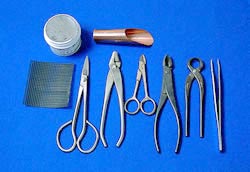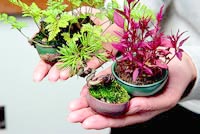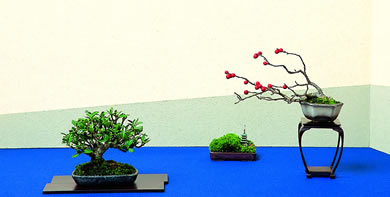Your bonsai needs looking after—at certain times you will have to change the soil and cut off unnecessary sprouts, branches and old roots, to get the tree to grow into the shape you want. The pictures and instructions on the right give hints on how to make your own unique bonsai.
Hirose Yukio of Yamato-en explains, "If you're a beginner, choose one or more small trees that are already shaped something like you want them to look later. Your first job is simply to look after them to keep them healthy. Generally they should be placed on a wooden board off the ground, in a sunny, well-ventilated place. To help them grow, you'll need to fertilize them during their growth spurt—that's when they put out new leaves. But the most important thing is watering. Generally, we water whenever the soil surface becomes dry, but in summer when the sun is strong you may have to water them two or three times a day. Bonsai demand time and commitment, but you'll find them fun to cultivate."



